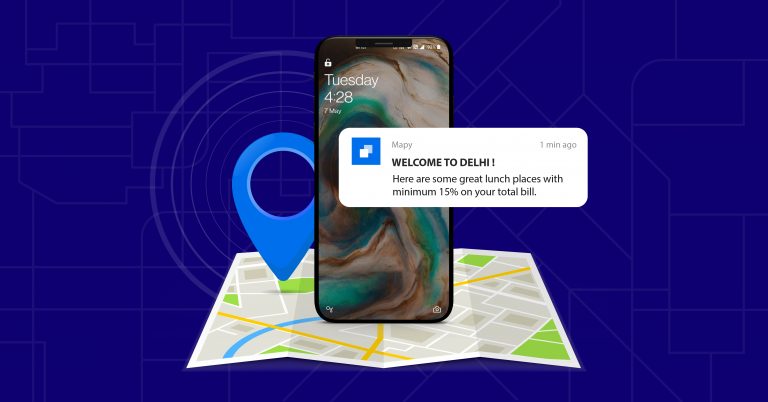Location data offers insights into the what and where of customers. Understanding where customers are and who they’re interacting with helps marketers craft messages that resonate more personally with their audience.
However, as with any other tool or technology, its true value is unlocked only when used properly and strategically. And that’s exactly what we discuss in this blog. From unpacking what location-based customer insights are to discussing geo-targeting strategies, let’s see how you can leverage location data for enhanced customer experiences.
Location data is collected from your consumer’s past or present location through their mobile devices. When this data is used to create relevant marketing content, the process is called location-based or geo-targeting marketing.
Similarly, location-based customer insights means analyzing customer behavior, preferences, and demographics using location data. This includes data from mobile devices, GPS, beacons, and geotags on social media. Using this data, businesses can trace movement patterns and interactions between customers and physical businesses like cafes, restaurants, retail shops, and more.
Location data is of many types — each providing different context and insights. Some of the most common types include:
Using this data, brands can harness location intelligence for businesses to uncover patterns, trends, and relationships that might not be blatantly obvious when viewed in isolation.

Location-based customer insights are a goldmine for marketers. They’re effective because they’re precise, targeted, and relevant to customer needs and preferences.
If you’re looking for some effective geo-targeting strategies, we’ve got you:
Localized SEO focuses on optimizing website content and online listings to maximize visibility among your target audience. This is a fail-safe strategy for businesses with in-store locations that target customers from a specific geographic area.
Some geo-targeting strategies for businesses include:
To simplify this process, competent partners such as SingleInterface, make managing your online presence hassle-free through robust marketing-to-commerce capabilities. You can manage all your listings, respond to comments, and engage with your audience without having to handle multiple tools at once.
Pro tip: Approach each review with empathy. If a customer leaves negative feedback, address their concern and use this feedback to mend any gaps in your business.
Geofencing is the process of setting up virtual boundaries around physical locations using GPS and RFID technology. This means that whenever someone enters this marked area, they will trigger certain actions — like targeted messages or promotions on their devices.
Here are some examples of how to use it below:
As the name suggests, event targeting involves aligning marketing efforts with specific events and festivities in a particular geographic location. By tailoring your messages, content, and even offers according to the festivities, you can hop on the neighborhood buzz and garner more engagement.
Here are a few ideas to get you started:
Bonus: This strategy will make your brand stand out as a champion of local festivities, fostering a sense of community with your audience.
Different people have different preferences when it comes to food, music, and even humor.
Content is no different. That’s why you need to tailor your content according to your audience. Using spatial analytics for customer insights, you can tailor content based on neighborhoods, streets, and demographics.
For instance, streaming services such as music and video platforms have a diverse audience with varying tastes. As a business owner, you can curate content, playlists, and recommendations that resonate with different regional and linguistic tastes.
Utilizing location-based services for customer understanding has enhanced how businesses interact with their audience on a daily basis. As technology continues to advance, we can expect even more innovative uses of location data to emerge.
Sophisticated technology like artificial intelligence (AI), machine learning (ML), and the Internet of Things (IoT) will play a pivotal role in the way businesses harness and leverage location-based customer insights to transform marketing strategies. We’re talking about real-time insights, hyper-personalized recommendations, and highly accurate spatial details.
But with great knowledge comes great responsibility. This vast access to data comes with tremendous responsibility — and the onus is on businesses to respect customer privacy as their priority. Businesses that understand this fine line will emerge successful and stay ahead of the rest.
By staying ahead of these trends and strategically leveraging location intelligence, organizations can unlock new opportunities for growth and forge deeper connections with their customers in the dynamic landscape of tomorrow.